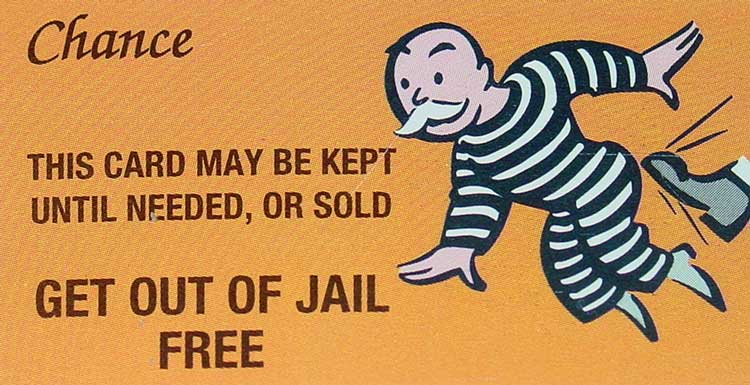One of the banes of my “Must Learn Spanish” existence has been the INSANE practice of assigning a gender to EVERY NOUN in the language! As a native English speaker, I didn’t know how good I had it, to be free of this nonsense.
The only thing that used to calm me down on the “issue” was knowing how many other great languages share the same burden: Latin, Spanish, French, Italian, German, Russian.
Well, I’m here to say that I’m FREE AT LAST from the gender-noun Spanish prison! And you can be too, by reading the short 197 words I’ve written, below, to break our family out of this jail. It’s as close to a get-out-of-jail-free card that you’re ever likely to find.
Masculine and Feminine Nouns
All Spanish nouns and pronouns are grammatically linked to the masculine (m.) or the feminine (f.) gender (“Gender” is a grammatical property and doesn’t necessarily have anything to do with biological gender.)
It’s important to get these gender associations right because adjectives, articles, possessives, and demonstratives must also agree in gender with the noun or pronoun to which they relate. Therefore, getting the gender of a noun “wrong” can become an amplified mistake.
Fortunately, this arbitrary (and somewhat ridiculous) language burden is ** dramatically** eased by the following consistent patterns:.
- Nouns referring to males are masculine.
- Nouns referring to females are feminine.
- Nouns ending in -o, -or, -aje, -men, -gen are masculine.
- Nouns ending in -a, -ad, -ed, -ud, -ión, -umbre, -ie are feminine.
- Many abstract nouns ending in -ma are masculine, (el problema, el tema, ‘theme,’ el clima, el drama, el problema, el sistema, el programa.)
Since the gender of a noun is arbitrary and their number is infinite, I disagree with teachers who say it’s best to learn the gender of a noun along with the noun itself. It’s far easier to internalize the patterns, above while taking note of any exceptions. Here’s the pattern for making nouns plural:
21 Flashcards
It took 21 flashcards to review the complete gender-noun pattern in Spanish. I made the cards using Anki’s SRS (Spaced Repetition System.) As each card is flipped, the example sentence is read aloud in perfect Spanish.
It won’t be long before they are able to forget about gender for the rest of their lives!
Bonus: Plurals in 75 Words
If a noun ends in:
1. A vowel, add -s (libro/libros, puerta/puertas.)
2. A consonant, add -es (pared/paredes, profesor/profesores.)
3. -z, change it to a -c and add -es (lápiz/lápices, luz/luces.)
4. The masculine plural is used if a group involves one or more masculine nouns: (e.g.,
Tengo muy buenos amigos (m. pl.), I have very good friends (where the friends may be male or a mixture of male
and female.)




